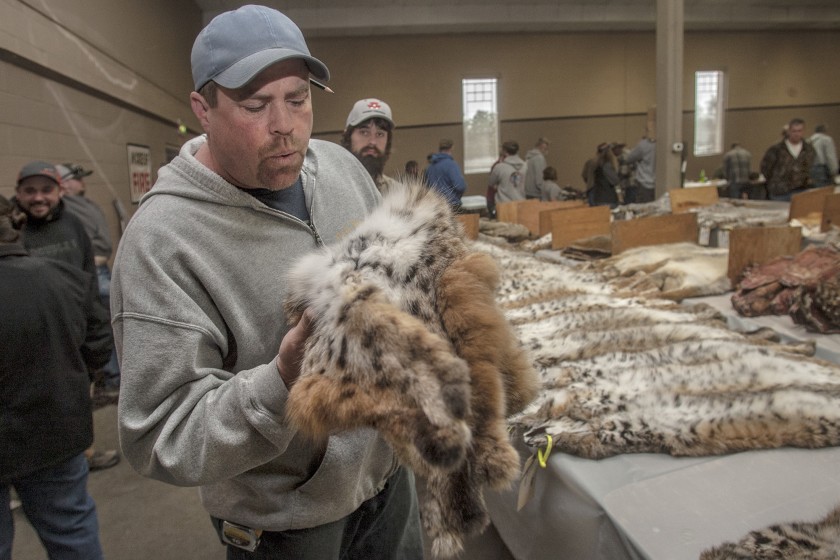Written by Louis Sahagun and Phil Willon / Los Angeles Times
SACRAMENTO — California has enacted a new ban on fur trapping for animal pelts, making it the first state to outlaw a centuries-old livelihood that was intertwined with the rise of the Western frontier.
The Wildlife Protection Act of 2019, signed into law by Gov. Gavin Newsom on Wednesday, prohibits commercial or recreational trapping on both public and private lands.
Assemblywoman Lorena Gonzalez (D-San Diego), who introduced the legislation, said it was time to end fur trapping. “It seems especially cruel, obviously, and it’s just unnecessary and costly,” she said.
Although commercial trapping was an early part of California’s economy, opening the San Francisco Bay Area to international commerce even before the 1848 California Gold Rush, its fortunes have waned over many decades
Gonzalez said that the roughly six dozen trappers still working in the state, down from more than 5,000 a century ago, cannot afford to pay the full cost of implementing and regulating their industry.
The ban also comes as California lawmakers consider more aggressive measures to protect animals and wildlife, often threatening age-old traditions.
Legislators are considering proposals to ban the sale of all fur products, including fur coats, and to outlaw the use of animals in any circus in the state, with the exception of domesticated horses, dogs and cats.
“There’s been a real change in attitudes about how we treat animals,” Gonzalez said.
A total of 68 trappers reported killing 1,568 animals statewide in 2017, according to the California Department of Fish and Wildlife. Among the 10 species reported taken were coyote, gray fox, beaver, badger and mink.
Trapped animals are strangled, shot or beaten to death, with care taken not to damage pelts before skinning them.
Under the law, using traps to catch gophers, house mice, rats, moles and voles would still be permitted.
The law followed a 2013 public outcry when conservationist Tom O’Key in 2013 discovered a bobcat trap illegally set on his property near the edge of Joshua Tree National Park.
O’Key stumbled upon the trap chained to a jojoba bush and camouflaged with broken branches just north of the 720,000-acre park, where the big cats are a dominant force in the ecosystem.
He immediately alerted neighbors and contacted the San Bernardino County Sheriff’s Department and Hi-Desert Star newspaper, triggering an angry tide of complaints that put a spotlight on the practice of trapping, killing and skinning bobcats to supply fur markets in China, Russia and Greece.
“I could not have guessed in a million years,” O’Key said in an interview, “that trap would spark an unstoppable movement capable of shifting legislative thinking toward wildlife.”
Assemblyman Richard Bloom (D-Santa Monica) pushed through his Bobcat Protection Act of 2013, which was in response to petition drives, social media campaigns and telephone calls to lawmakers from wildlife advocates who decried trapping and killing as a cruel trade.
Eight months after O’Key sounded the alarm in Joshua Tree, the California Fish and Game Commission voted 3 to 2 to ban commercial bobcat trapping statewide.
The Wildlife Protection Act of 2019 argues that the small number of active trappers in the state cannot afford to pay the full cost of implementing and regulating their industry as required by law.
It was backed by the Center for Biological Diversity, and the nonprofit group Social Compassion in Legislation, which spearheaded a recent bill that put an end to the sale of mill-bred dogs, cats and rabbits.
Opponents included the California Farm Bureau Federation, which warned that the bill, if passed, could have significant economic consequences for the agriculture industry.
The trapping industry declined over decades in California.
Before California’s population ballooned to roughly 40 million people, fur trapping played a significant role in the extirpation of wolves and wolverines and the severe declines of sea otters, fishers, martens, beavers and other fur-bearing species.
Over the last two decades, animal protectionists have partnered with mainstream environmental groups to put pressure on state and federal wildlife authorities, and to take their animal-cruelty concerns to the voters. Trappers are anachronistic, they said, and their snares subject wildlife to horrific suffering.
“The signing of this bill into law is the result of compelling data and a change of heart in public opinion regarding animal cruelty,” said Judie Mancuso, founder and president of Social Compassion in Legislation.



